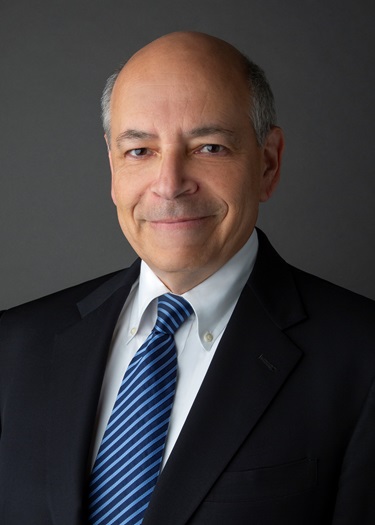The new policy applies to “affirmative civil enforcement” (ACE) actions brought by DOJ. Declaring that “[g]uidance documents cannot create binding requirements that do not already exist by statute or regulation,” the policy dictates that “effective immediately for ACE cases, the Department may not use its enforcement authority to effectively convert agency guidance documents into binding rules.” In short, the policy bars DOJ lawyers from bringing enforcement actions that require compliance with agency guidance documents, which do not have the force of law of statutes or legislative rules.
The new policy has major implications for civil environmental enforcement actions, like new source review cases and Clean Water Act matters, in which DOJ relies heavily on Environmental Protection Agency (EPA) guidance documents to establish violations of law.
However, it is less certain how the new policy will apply to U.S. Comprehensive Environmental Response, Compensation & Liability Act of 1980 (CERCLA) settlements and other CERCLA actions, where EPA traditionally relies on sometimes lengthy guidance documents to guide private party cleanups.
DOJ’s new policy raises several questions regarding CERCLA actions and other environmental enforcement actions that rely on EPA guidance.
- Will the new policy bar the practice of incorporating guidance documents into CERCLA consent decrees? EPA’s model consent decree for remedial design and remedial action contains multiple references to guidance documents, including qualifications for contractors and requirements for posting financial assurance. More so, EPA’s model Statement of Work (SOW) defines the detailed requirements for a cleanup. The SOW is incorporated into the consent decree as an enforceable part of the settlement; for all practical purposes, it is part of the consent decree.
EPA’s model SOW contains references to more than 40 guidance documents that bind the private parties’ conduct. In fact, not only does the model SOW require adherence to existing guidance documents; it requires compliance with “any subsequent modification, amendment, or replacement of such ... guidance.”
It is not clear, however, that the new policy even applies to a consensual settlement document, in which a private party signing the consent decree agrees to be bound by EPA guidance rather than being directed to follow that guidance. However, to lodge a CERCLA consent decree, DOJ simultaneously files a civil complaint with the court. Read broadly, that could cross the line drawn by the policy, which states that DOJ “may not use its enforcement authority to effectively convert agency guidance documents into binding rules.”
At the least, private parties negotiating consent decrees with DOJ and EPA should explore whether the current policy of demanding compliance with guidance documents as an element of settlement should stand in light of the new DOJ policy. - What happens, then, when DOJ tries to enforce a consent decree? Even if the new policy on guidance documents does not apply directly to settlement agreements like consent decrees in the first instance, might it apply if DOJ brings a judicial action to enforce a consent decree? Suppose that the settling defendant implementing the cleanup is accused of violating the consent decree, triggering an action by DOJ to enforce the terms of the settlement, including failure to follow EPA guidance documents incorporated into the consent decree and SOW. That would seem to trigger the DOJ policy against bringing enforcement actions to “effectively convert agency guidance documents into binding rules.” And that, of course, bears on the first question of whether the new policy applies to consent decrees, at all. If DOJ cannot enforce compliance with EPA guidance documents in a case alleging violation of a consent decree, how can DOJ and EPA insist on including those guidance documents in the settlement in the first instance?
- What about DOJ enforcement of unilateral administrative orders? Consent decrees aren’t the only documents that require compliance with EPA guidance documents. When EPA issues a unilateral administrative order (UAO) to a private party, it attaches a SOW based on the same model used for consent decrees — which, as discussed above, requires adherence to no fewer than 40 EPA guidance documents.
Of course, a UAO is issued by EPA, not DOJ, so the new DOJ policy does not directly bind EPA. However, if the respondent refuses to comply with the UAO, EPA refers the matter to DOJ, which must then sue the respondent to enforce the UAO. Quite clearly, DOJ cannot — consistent with the new policy — bring a new civil enforcement action to compel compliance with an EPA UAO that is laden with requirements to adhere to dozens of EPA guidance documents. How, then, can EPA include those requirements in a UAO in the first instance, if they cannot be enforced? Wouldn’t that hand an argument to the respondent that the UAO is unlawfully issued, providing a basis for refusing to comply with its terms? That will now become an important consideration in the calculus a respondent must undertake when deciding whether to comply with a CERCLA UAO. - What is the effect on Clean Air Act enforcement? DOJ’s enforcement of Clean Air Act matters relies heavily on EPA guidance. In new source review matters, DOJ typically files lengthy briefs that repeatedly cite agency guidance on issues such as the proper emissions methodology, the routine maintenance, repair or replacement exemption and what is considered the best available control technology. DOJ also has sought to use agency guidance to claim that a defendant had fair notice of the regulatory requirements and counter any alternative interpretation of regulatory text by a defendant. On the mobile source side of air enforcement, EPA’s position on tampering with emissions controls is codified not in regulations, but in a 1972 “interim” guidance referred to as Memo 1A.
The practical impact of the new DOJ policy is to make it more difficult for line attorneys to obtain approval for Clean Air Act complaints, as merely citing to a guidance will not be, in and of itself, sufficient to establish a violation. Indeed, if DOJ will not rely on the guidance in litigation, EPA enforcement will have to assess whether it can rely on the guidance when issuing notices of violation, in settlement discussions or in administrative enforcement proceedings. Likewise, it’s reasonable to expect that DOJ’s litigation strategy for filed matters will now undergo scrutiny to ensure that it’s limited to enforcement of the four corners of a regulation. For example, DOJ briefs will likely contain far less citation to EPA guidance to establish the agency’s position on legal issues.
Attorney Advertising—Sidley Austin LLP is a global law firm. Our addresses and contact information can be found at www.sidley.com/en/locations/offices.
Sidley provides this information as a service to clients and other friends for educational purposes only. It should not be construed or relied on as legal advice or to create a lawyer-client relationship. Readers should not act upon this information without seeking advice from professional advisers. Sidley and Sidley Austin refer to Sidley Austin LLP and affiliated partnerships as explained at www.sidley.com/disclaimer.
© Sidley Austin LLP


